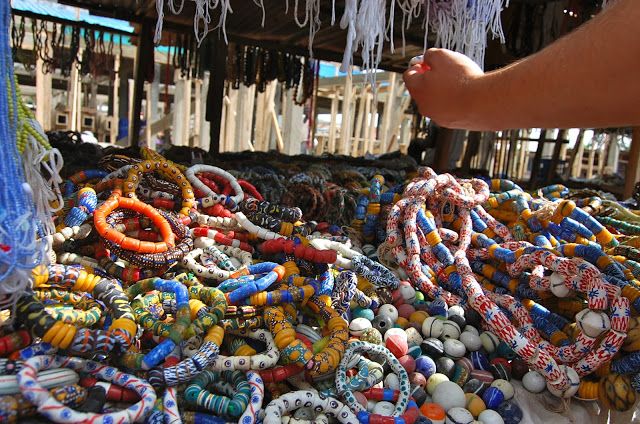Beadmaking is more than just an artistic endeavor in Ghana; it’s a time-honored tradition that weaves together history, culture, and identity. For generations, the art of beadmaking has played a pivotal role in Ghanaian society, serving as a means of communication, expression, and connection. In this article, we delve into the deep-rooted cultural significance of beadmaking in Ghana.
Beadmaking in Ghana has a history that spans centuries, with evidence of beads dating back to pre-colonial times. These intricate adornments were not only decorative but held spiritual, social, and economic significance. The early beadmakers used locally sourced materials like clay, bone, and stones to craft these treasures, each piece telling a story of its time.
Beads in Ghana are more than just ornamental; they are carriers of messages and symbols. Different colors, patterns, and shapes communicate specific meanings, often related to status, age, marital status, and even the wearer’s personal beliefs. Beads have been used as amulets, charms, and talismans, believed to possess protective and healing properties.
Beads hold a central place in traditional Ghanaian clothing and accessories. They adorn ceremonial attire, regal garments, and everyday clothing alike. Beadwork isn’t just about embellishment—it’s about self-expression and connecting to one’s heritage. By wearing beads, Ghanaians proudly showcase their cultural identity and ancestral ties.
Beads feature prominently in Ghana’s rituals and celebrations. From naming ceremonies to weddings and funerals, beads are used to mark important life events. These beads carry stories of family lineage, convey blessings, and serve as a form of commemoration. They symbolize continuity and the interconnectedness of generations.
Ghana’s history as a trading hub contributed to the diversity of beads used in the country. Beads were traded across regions, connecting different cultures and societies. The glass beads introduced by European traders during the colonial era were integrated into Ghanaian beadwork, reflecting the nation’s ability to adapt and incorporate new materials while preserving traditional techniques.
Beadmaking is not only a cultural practice but also a source of livelihood for many Ghanaians. Artisans skillfully craft beads by hand, employing techniques that have been passed down through generations. The economic value of beadmaking provides these artisans with a means of supporting themselves and their families while keeping the craft alive.
In a rapidly changing world, the art of beadmaking faces challenges. However, efforts are being made to preserve this vital aspect of Ghana’s cultural heritage. Artisans, cultural organizations, and even educational institutions are working together to ensure that the knowledge and skills associated with beadmaking continue to thrive and evolve.
Beadmaking in Ghana transcends aesthetics—it is a living art form that encapsulates history, spirituality, and personal identity. The practice not only connects Ghanaians to their roots but also bridges generations and cultures. With every bead crafted, the artisans continue to shape Ghana’s cultural narrative, reminding us that the threads of tradition are woven into the very fabric of identity.





